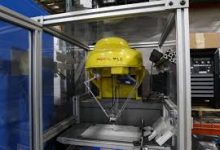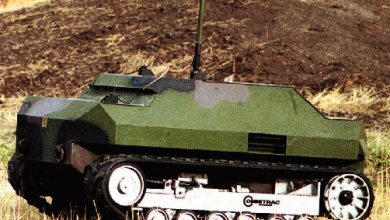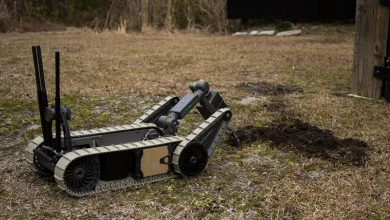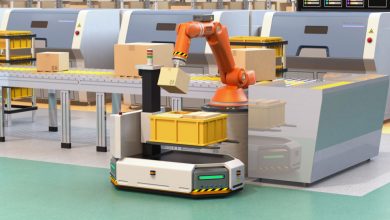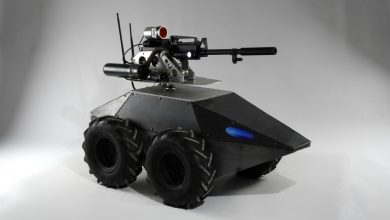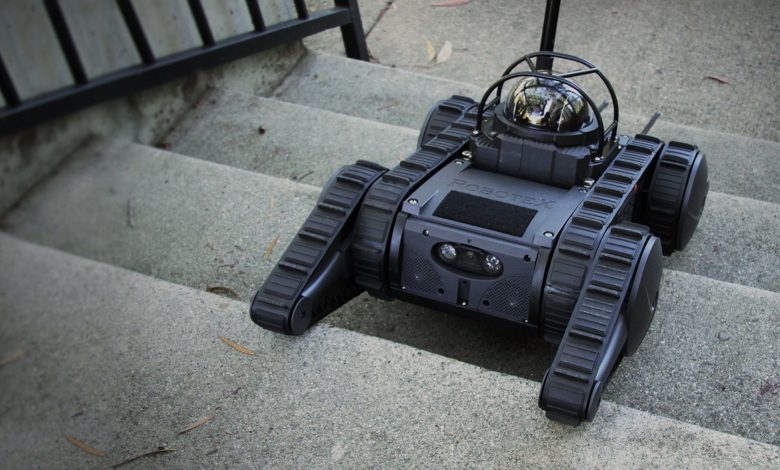
Introduction:
In the dynamic landscape of modern warfare, technological advancements continually shape military capabilities and strategies. Among these innovations, Avatar Tactical Robotics stand out as cutting-edge unmanned systems designed to revolutionize military operations. These sophisticated robotic platforms offer a range of capabilities, from reconnaissance and surveillance to combat support and force protection. This exploration delves into the features, applications, and implications of Avatar Tactical Robotics in modern warfare, highlighting their role as force multipliers and game-changers on the battlefield.
Evolution of Military Robotics:
The roots of military robotics can be traced back to the mid-20th century, with early developments in remotely controlled vehicles and unmanned aerial vehicles (UAVs). Over the decades, advancements in robotics, artificial intelligence (AI), and sensor technology have propelled the evolution of military robotics to new heights. Today, Avatar Tactical Robotics represent the pinnacle of this evolution, offering unprecedented levels of autonomy, mobility, and versatility to military forces worldwide.
From Science Fiction to Battlefield Reality: The Evolution of Military Robotics
Introduction:
The evolution of military robotics is a testament to human ingenuity and technological innovation. What was once the realm of science fiction has now become a reality on the modern battlefield. Over the decades, advancements in robotics, artificial intelligence (AI), and sensor technology have transformed the nature of warfare, enabling military forces to leverage unmanned systems for reconnaissance, surveillance, and combat operations. This exploration delves into the rich history and evolution of military robotics, tracing its trajectory from humble beginnings to the cutting-edge unmanned systems of today.
Early Developments and Remote-Controlled Vehicles:
The roots of military robotics can be traced back to the early 20th century, with the development of remote-controlled vehicles for military applications. During World War II, various nations experimented with remotely piloted aircraft, tanks, and boats for reconnaissance and surveillance purposes. While these early systems were rudimentary and often unreliable, they laid the groundwork for future advancements in unmanned systems.
Unmanned Aerial Vehicles (UAVs) and Drones:
The advent of unmanned aerial vehicles (UAVs) revolutionized military reconnaissance and surveillance capabilities. During the Cold War, both the United States and the Soviet Union developed and deployed UAVs for intelligence-gathering missions. These early drones were typically used for reconnaissance and surveillance, providing valuable imagery and intelligence to military commanders. With advancements in technology, UAVs evolved to become more sophisticated, capable of carrying out a variety of missions, including strike operations and electronic warfare.
Ground-Based Robotics and Unmanned Ground Vehicles (UGVs):
In addition to aerial drones, military forces began to explore the use of ground-based robotics for a variety of applications. Unmanned ground vehicles (UGVs) emerged as versatile platforms for tasks such as reconnaissance, route clearance, and logistics support. These robotic vehicles could traverse rugged terrain, navigate obstacles, and perform tasks in hazardous environments, reducing the risk to human soldiers. With advancements in autonomy and mobility, UGVs became increasingly capable of operating autonomously in complex and dynamic environments.
Autonomous Systems and Artificial Intelligence:
The evolution of military robotics has been driven in large part by advancements in artificial intelligence (AI) and autonomy. Modern unmanned systems leverage AI algorithms to process sensor data, analyze the environment, and make real-time decisions autonomously. This capability enables unmanned systems to operate with greater independence and adaptability, enhancing their effectiveness in dynamic and contested environments. Moreover, AI enables unmanned systems to learn from experience, improving their performance and capabilities over time.
Integration and Interoperability:
As military robotics technologies have evolved, efforts have been made to integrate unmanned systems into existing military operations and command structures. Interoperability between unmanned systems and manned platforms is essential for seamless coordination and collaboration on the battlefield. Moreover, integration with command and control systems enables military commanders to leverage unmanned systems for a wide range of missions, from reconnaissance and surveillance to strike operations and logistics support.
Future Trends and Outlook:
The future of military robotics promises to be even more transformative, with continued advancements in technology driving innovation and capability enhancements. Future unmanned systems may incorporate advanced features such as swarm intelligence, collaborative autonomy, and human-machine teaming, enabling greater coordination and cooperation between unmanned systems and human operators. Moreover, the proliferation of robotics technology may lead to the development of new tactics, techniques, and procedures for employing unmanned systems in military operations, reshaping the nature of warfare in the 21st century.
Conclusion:
The evolution of military robotics represents a remarkable journey of innovation and technological advancement. From the early experiments with remote-controlled vehicles to the sophisticated unmanned systems of today, military robotics have revolutionized the way wars are fought and won. As technology continues to advance, the role of military robotics will only continue to grow, driving innovation, enhancing capabilities, and reshaping the future of warfare in an increasingly complex and dynamic global security environment.
Features and Capabilities:
Avatar Tactical Robotics are characterized by their advanced features and capabilities, which enable them to perform a wide range of missions in diverse operational environments. These robotic platforms are equipped with a suite of sensors, including cameras, LiDAR, and infrared imagers, providing real-time situational awareness to operators. Additionally, Avatars can be outfitted with various payloads, such as communication relays, surveillance equipment, and even weapon systems, enabling them to support a variety of mission objectives, from reconnaissance and surveillance to target acquisition and engagement.
Advanced Warfare: Exploring the Features and Capabilities of Avatar Tactical Robotics
Introduction:
In the ever-evolving landscape of modern warfare, technological advancements have transformed the way military operations are conducted. Among these innovations, Avatar Tactical Robotics stand out as cutting-edge unmanned systems designed to provide unparalleled capabilities on the battlefield. Equipped with advanced sensors, artificial intelligence (AI), and mobility features, Avatar Tactical Robotics offer military forces enhanced situational awareness, reconnaissance, and combat support capabilities. This exploration delves into the features, capabilities, and potential impact of Avatar Tactical Robotics, highlighting their role as force multipliers and game-changers in modern warfare.
Mobility and Maneuverability:
One of the defining features of Avatar Tactical Robotics is their mobility and maneuverability. These unmanned systems are designed to operate in a wide range of environments, from urban areas to rugged terrain and hostile environments. Equipped with robust mobility systems, including tracks, wheels, or legs, Avatars can traverse obstacles, navigate complex terrain, and access areas inaccessible to traditional vehicles. This agility and versatility enable Avatars to support military forces in diverse operational scenarios, providing reconnaissance, surveillance, and support capabilities wherever they are needed.
Advanced Sensor Suite:
Avatar Tactical Robotics are outfitted with a sophisticated sensor suite, including cameras, LiDAR, radar, and thermal imaging systems. These sensors provide real-time situational awareness to operators, enabling them to detect, identify, and track targets, threats, and obstacles in the operational environment. Additionally, the sensor suite enables Avatars to gather intelligence, collect data, and provide valuable information to commanders, enhancing decision-making capabilities on the battlefield. With their advanced sensors, Avatars can operate day or night, in any weather conditions, providing round-the-clock surveillance and reconnaissance capabilities.
Autonomous Operation:
Autonomy is a key feature of Avatar Tactical Robotics, enabling them to operate with minimal human intervention in complex and dynamic environments. Leveraging AI algorithms and machine learning, Avatars can navigate autonomously, plan routes, and make real-time decisions based on sensor data and environmental cues. This autonomy enhances operational flexibility and adaptability, allowing Avatars to respond rapidly to changing battlefield conditions and mission requirements. Moreover, autonomous operation reduces the cognitive load on human operators, enabling them to focus on higher-level tasks and decision-making.
Payload Flexibility:
Avatar Tactical Robotics are designed with payload flexibility in mind, allowing them to support a wide range of mission objectives and requirements. These unmanned systems can be outfitted with various payloads, including communication systems, surveillance equipment, weapon mounts, and medical kits. Depending on the mission, Avatars can be configured to provide reconnaissance and surveillance support, conduct target acquisition and designation, or deliver supplies and medical aid to troops in the field. This versatility enables Avatars to adapt to evolving mission needs and operational scenarios, maximizing their utility and effectiveness on the battlefield.
Communication and Networking:
Effective communication and networking capabilities are essential for coordinating and collaborating between manned and unmanned platforms on the battlefield. Avatar Tactical Robotics are equipped with advanced communication systems, enabling them to communicate with other unmanned systems, ground forces, and command centers in real-time. This seamless integration enables Avatars to share intelligence, coordinate movements, and execute missions collaboratively with other assets on the battlefield. Moreover, Avatars can serve as communication relays, extending the reach and coverage of military communications networks in remote or contested areas.
Scalability and Interoperability:
Scalability and interoperability are critical considerations for integrating Avatar Tactical Robotics into existing military operations and command structures. These unmanned systems are designed to be scalable, allowing military forces to deploy single units or coordinated swarms of Avatars to achieve mission objectives. Moreover, interoperability between Avatars and other manned and unmanned platforms enables seamless coordination and collaboration on the battlefield. This interoperability enhances the effectiveness of military operations by enabling Avatars to work in concert with other assets to achieve shared goals and objectives.
Conclusion:
Avatar Tactical Robotics represent a paradigm shift in modern warfare, offering military forces enhanced capabilities and versatility on the battlefield. With their mobility, advanced sensor suite, autonomy, payload flexibility, communication, and networking capabilities, Avatars are poised to revolutionize the way military operations are conducted. As technology continues to advance, the role of Avatar Tactical Robotics will only continue to grow, driving innovation, enhancing capabilities, and reshaping the future of warfare in an increasingly complex and dynamic global security environment.
Applications in Military Operations:
The versatility of Avatar Tactical Robotics makes them valuable assets across a spectrum of military operations. In reconnaissance and surveillance missions, Avatars can gather critical intelligence on enemy positions, terrain features, and potential threats, providing commanders with valuable situational awareness and decision-making capabilities. Avatars can also be deployed for force protection, conducting perimeter security, convoy escort, and overwatch operations to safeguard troops and assets in hostile environments. Additionally, Avatars can support combat operations by providing fire support, suppressing enemy positions, and facilitating maneuver warfare.
Transforming Warfare: Exploring the Multifaceted Applications of Avatar Tactical Robotics in Military Operations
Introduction:
In the dynamic landscape of modern warfare, military forces are increasingly turning to advanced technologies to gain an edge on the battlefield. Among these innovations, Avatar Tactical Robotics stand out as versatile and adaptable unmanned systems designed to enhance military capabilities across a wide range of mission objectives. From reconnaissance and surveillance to combat support and force protection, Avatar Tactical Robotics offer military forces unparalleled capabilities and flexibility in achieving mission success. This exploration delves into the diverse applications of Avatar Tactical Robotics in military operations, highlighting their role as force multipliers and game-changers on the modern battlefield.
Reconnaissance and Surveillance:
One of the primary applications of Avatar Tactical Robotics in military operations is reconnaissance and surveillance. Equipped with advanced sensors, including cameras, LiDAR, radar, and thermal imaging systems, Avatars can gather critical intelligence on enemy positions, movements, and activities. Operating autonomously or under the control of human operators, Avatars can conduct covert surveillance missions, monitor key areas of interest, and provide real-time situational awareness to military commanders. With their ability to operate day or night, in any weather conditions, Avatars play a crucial role in gathering actionable intelligence to support military decision-making.
Target Acquisition and Designation:
Avatar Tactical Robotics are invaluable assets for target acquisition and designation in military operations. Leveraging their advanced sensors and autonomous capabilities, Avatars can detect, identify, and track enemy targets with precision and accuracy. Operating in conjunction with other manned and unmanned platforms, Avatars can designate targets for precision-guided munitions, enabling effective strikes against enemy assets with minimal collateral damage. Additionally, Avatars can provide real-time targeting data to ground forces, enhancing their situational awareness and enabling more effective engagement of enemy forces.
Combat Support:
Avatars provide essential combat support capabilities to military forces operating in dynamic and contested environments. These unmanned systems can be outfitted with various payloads, including weapon mounts, communication relays, and medical kits, to support troops in the field. In combat scenarios, Avatars can provide fire support, suppress enemy positions, and deliver supplies and medical aid to troops in need. Moreover, Avatars can serve as force multipliers, enabling military forces to extend their reach and effectiveness on the battlefield while minimizing the risk to personnel.
Force Protection:
Force protection is a critical priority for military forces operating in hostile environments, and Avatar Tactical Robotics play a vital role in enhancing the safety and security of troops. Avatars can conduct perimeter security, patrol key areas, and provide overwatch for convoys and forward operating bases. Equipped with advanced sensors and autonomous capabilities, Avatars can detect and deter potential threats, providing early warning of enemy activity and enabling troops to take proactive measures to mitigate risks. Additionally, Avatars can serve as decoys or diversionary tactics, drawing enemy fire away from friendly forces and enhancing overall force protection.
Intelligence, Surveillance, and Reconnaissance (ISR):
Avatar Tactical Robotics are integral components of military intelligence, surveillance, and reconnaissance (ISR) operations. These unmanned systems can gather critical intelligence on enemy capabilities, intentions, and vulnerabilities, providing commanders with actionable insights to inform decision-making. Operating autonomously or in coordinated swarms, Avatars can conduct wide-area surveillance, monitor key chokepoints and avenues of approach, and track enemy movements in real-time. By providing persistent ISR coverage, Avatars enable military forces to maintain a comprehensive understanding of the operational environment and respond effectively to emerging threats.
Special Operations and Urban Warfare:
In special operations and urban warfare scenarios, Avatar Tactical Robotics offer unique capabilities for reconnaissance, surveillance, and combat support. These unmanned systems can navigate complex urban environments, gather intelligence on enemy strongholds, and provide support to special forces units operating behind enemy lines. Equipped with advanced sensors and stealth capabilities, Avatars can conduct covert operations, infiltrate enemy territory, and deliver precise strikes against high-value targets. Moreover, Avatars can serve as force multipliers, enabling special operations forces to achieve their objectives with greater speed, precision, and lethality.
Conclusion:
Avatar Tactical Robotics represent a paradigm shift in military operations, offering military forces unparalleled capabilities and versatility on the modern battlefield. With their applications in reconnaissance and surveillance, target acquisition and designation, combat support, force protection, intelligence, surveillance, and reconnaissance (ISR), and special operations, Avatars play a crucial role in enhancing operational effectiveness and achieving mission success in diverse and challenging environments. As technology continues to advance, the role of Avatar Tactical Robotics will only continue to grow, driving innovation, enhancing capabilities, and reshaping the future of warfare in an increasingly complex and dynamic global security environment.
Advantages and Benefits:
The adoption of Avatar Tactical Robotics offers numerous advantages and benefits to military forces operating in complex and contested environments. These unmanned systems enhance operational effectiveness by extending the reach and endurance of military forces, operating in environments too hazardous or inaccessible for human soldiers. Additionally, Avatars minimize the risk to personnel by conducting reconnaissance and surveillance missions without exposing troops to danger. Moreover, Avatars can enhance situational awareness and decision-making, enabling commanders to make informed choices and adapt to changing battlefield conditions.
Unleashing the Power of Innovation: Exploring the Advantages and Benefits of Avatar Tactical Robotics in Military Operations
Introduction:
In the ever-evolving landscape of modern warfare, technological advancements have become paramount in ensuring military superiority and effectiveness on the battlefield. Among these innovations, Avatar Tactical Robotics have emerged as game-changing assets, offering a myriad of advantages and benefits to military forces worldwide. From enhancing situational awareness to reducing risks to personnel, Avatar Tactical Robotics represent a paradigm shift in military operations. This exploration delves into the multifaceted advantages and benefits of Avatar Tactical Robotics, highlighting their transformative impact on modern warfare.
Enhanced Situational Awareness:
One of the primary advantages of Avatar Tactical Robotics is their ability to provide enhanced situational awareness to military commanders and operators. Equipped with advanced sensors, including cameras, LiDAR, radar, and thermal imaging systems, Avatars offer real-time intelligence and surveillance capabilities. By gathering critical information on enemy positions, movements, and activities, Avatars enable military forces to make informed decisions and adapt to rapidly changing battlefield conditions.
Minimized Risk to Personnel:
Avatar Tactical Robotics play a crucial role in minimizing the risk to military personnel by conducting reconnaissance, surveillance, and combat support missions in lieu of human soldiers. Operating autonomously or under the control of human operators, Avatars can navigate hazardous environments, gather intelligence, and engage enemy targets without exposing troops to danger. By reducing the need for human presence on the battlefield, Avatars enhance force protection and mitigate the risk of casualties.
Operational Flexibility and Adaptability:
The versatility and adaptability of Avatar Tactical Robotics offer military forces unparalleled operational flexibility. These unmanned systems can be deployed in a wide range of environments, from urban areas to rugged terrain and hostile environments. With their mobility, autonomy, and payload flexibility, Avatars can support diverse mission objectives, including reconnaissance, surveillance, combat support, and force protection. Moreover, Avatars can adapt to evolving mission requirements and operational scenarios, maximizing their utility and effectiveness on the battlefield.
Extended Reach and Endurance:
Avatar Tactical Robotics extend the reach and endurance of military forces, enabling them to operate in remote or contested areas with limited logistical support. These unmanned systems can cover vast distances and operate for extended periods, providing persistent surveillance and reconnaissance capabilities to military commanders. By leveraging advanced mobility systems and energy-efficient designs, Avatars can access areas inaccessible to traditional vehicles and remain on station for prolonged durations, enhancing the reach and effectiveness of military operations.
Cost Savings and Resource Efficiency:
The adoption of Avatar Tactical Robotics offers significant cost savings and resource efficiency for military forces. Compared to manned platforms, Avatars require fewer personnel to operate and maintain, reducing manpower requirements and associated costs. Moreover, Avatars can operate autonomously, minimizing the need for logistical support and reducing fuel consumption and maintenance expenses. By optimizing resource allocation and minimizing operational costs, Avatar Tactical Robotics enable military forces to achieve greater efficiency and effectiveness in achieving mission objectives.
Force Multiplier Effect:
Perhaps the most significant advantage of Avatar Tactical Robotics is their ability to serve as force multipliers, enhancing the capabilities of military forces and enabling them to achieve mission success with fewer resources. By providing enhanced situational awareness, minimizing risks to personnel, and extending the reach and endurance of military operations, Avatars augment the effectiveness of conventional forces and enable them to operate more effectively in complex and contested environments. Moreover, Avatars enable military forces to project power and influence over greater distances, enhancing their strategic reach and operational effectiveness on the modern battlefield.
Conclusion:
Avatar Tactical Robotics represent a transformative force in modern warfare, offering military forces unparalleled advantages and benefits in achieving mission success. From enhanced situational awareness to minimize risk to personnel, operational flexibility, extended reach and endurance, cost savings, and force multiplier effects, Avatars revolutionize the way military operations are conducted. As technology continues to advance, the role of Avatar Tactical Robotics will only continue to grow, driving innovation, enhancing capabilities, and reshaping the future of warfare in an increasingly complex and dynamic global security environment.
Challenges and Considerations:
Despite their many benefits, Avatar Tactical Robotics present several challenges and considerations for military forces. Integration into existing command and control systems requires interoperability and compatibility with legacy equipment and infrastructure. Moreover, ensuring the security and resilience of robotic platforms against cyber threats and electronic warfare is essential to prevent exploitation by adversaries. Additionally, ethical and legal considerations surrounding the use of autonomous weapons and unmanned systems in warfare must be carefully addressed to ensure compliance with international humanitarian law and ethical norms.
Future Outlook:
The future outlook for Avatar Tactical Robotics is promising, with continued advancements in robotics, AI, and sensor technology driving innovation and capability enhancements. Future iterations of Avatar platforms may incorporate swarm intelligence, collaborative autonomy, and human-robot teaming capabilities, enabling greater coordination and cooperation between robotic platforms and human operators. Moreover, the proliferation of robotics technology may lead to the development of new tactics, techniques, and procedures for employing unmanned systems in military operations, reshaping the nature of warfare in the 21st century.
Conclusion:
Avatar Tactical Robotics represent a paradigm shift in military operations, offering unparalleled capabilities and versatility to military forces worldwide. By leveraging advanced robotics technology, military forces can enhance their operational effectiveness, minimize risks to personnel, and achieve mission success in challenging and dynamic environments. However, the adoption of Avatar Tactical Robotics also presents challenges and considerations that must be carefully addressed to ensure the safe, ethical, and effective use of unmanned systems in warfare. With strategic planning, investment, and collaboration, Avatar Tactical Robotics have the potential to revolutionize the way military forces conduct operations and project power in an increasingly complex and contested global security environment.

